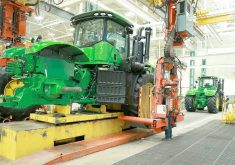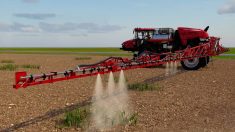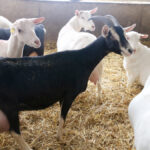Alone amongst the cheerleading for the new Canada/EU trade agreement was an angry broadside from the Canadian dairy industry. It feels sold by the doubling of quota for tariff-free EU fine cheese imports. The dairy producers feel it will drive small Canadian artisanal cheese producers out of business under a flood of additional EU fine cheese imports.
It could impact such cheese producers in Alberta, but most artisanal production is in Ontario and Quebec. To dodge the political repercussions from producers in those provinces and particularly from the Quebec government, the federal government will be offering compensation to those affected. That could set a precedent, especially if the compensation involves producers and not just processors. More on that later.
Read Also

Guarding against misinformation: Do you believe in house hippos?
Misinformation and disinformation run rampant in today’s digital age. Farmers must be wary of the digital dangers and know how to keep themselves safe.
On the one hand it must have been disappointing for the dairy industry, which has spent millions over the years lobbying provincial and federal governments to remain steadfast in their support for supply management (SM), including stiff tariffs on imported dairy products. The industry’s lobbying power is legendary, with not a single government or opposition party anywhere in the country stepping out of line. At the trade discussion level it has gone toe to toe with groups like the Canadian Agri-Food Trade Alliance, which sees SM as a hurdle to more open markets. Both groups have competed furiously to get the attention of Canadian trade officials to influence trade issues their way.
I would suggest that even though the dairy industry protests the agreement, it actually came out a winner — at least for the time being.
The agreement could have been a lot worse for the Canadian dairy industry. For instance, quotas and tariffs could have been eliminated completely on dairy products. I expect the dairy industry, at least unofficially, probably agrees with that perspective. I suspect the EU understood the political quagmire Canadian officials were in with SM and cut them some slack, but you can expect they will be back for more quota in the future.
The reality is that cheese is about the only (maybe some yogurt) high-value dairy product that the EU can export to Canada. It’s not really feasible to ship fluid milk from the EU to Canada. Such lack of feasibility is probably why the poultry industry was cut out of the agreement, along with lack of interest by the EU poultry industry.
The overall long-term impact of increased quota may well be less than some of the inflammatory predictions. Those purchasing imported fine cheeses will probably buy more if there is a significant reduction in the retail price. But most Canadians consume commercial-grade cheddar, mozzarella and processed cheeses, and that’s unlikely to change even though the EU commercial cheese quota was also increased. Commercial cheese in Canada is produced by a few giant processors and they are not going to give up any market to EU interlopers without a fight. Besides the EU has high production costs at both the producer and processor level so even tariff-free commercial product will have a hard time competing.
The concern for cheese producers is whether subsidies will give Europeans a critical advantage over the Canadian industry. Very little is said in the Canada/EU trade agreement as to how such subsidization is going to be dealt with between the two parties. The EU is notorious for its hidden farm and processor subsidies that lower their cost of production. The existence of myriad EU ag subsidies is no longer in question. Their own documents show such subsidies consume over 40 per cent of the multibillion-dollar EU budget.
The problem is that in its eagerness to get the EU to ratify the deal, Canada may not want to robustly deal with EU subsidies. No EU member will give up its farm subsidies just to sign a trade deal with Canada.
What the dairy industry needs to be concerned with in the bigger picture is how this agreement will set a precedent for trade relations with other countries. It’s almost guaranteed that the U.S., New Zealand, Australia, Argentina and a stampede of other countries will all be clamouring for free trade agreements with the EU. When that happens much of the export benefits of the Canada/EU agreement will in time be cancelled out. The precedent may well get worse for the Canadian dairy industry.
As Canada continues to increase quota and decrease tariffs on EU cheese imports, one can expect that the U.S. and New Zealand will sooner or later want equal and better access to the Canadian market. Those two dairy exporters are a much bigger threat to Canadian producers than the EU. Both countries are major producers and processors of the same commercial cheeses that are produced in Canada and they can produce them a lot cheaper. That threat may come soon as Canada wants to become part of the Trans-Pacific Partnership. Both countries are members of that trade group and they will be extracting (more dairy access?) a price out of Canada to join.
Lastly, the Canadian government has said it will be providing compensation to the dairy industry for any losses they incur from increased EU cheese imports. That may seem fair on the surface, but it sets a precedent that may come back to haunt the industry in the future. Such a compensation program, if successful, may become the forerunner of a future program that will see the government begin to buy out dairy and poultry quotas in order to dismantle supply management in Canada. Scoff as one may at such a prediction, but Australia carried out a buyout program to end a somewhat similar dairy supply management system.
The poultry and dairy industries may want to shift their lobbying locomotives into high gear. The EU deal was just the first curve on the road, and the SM drama may have just begun.














